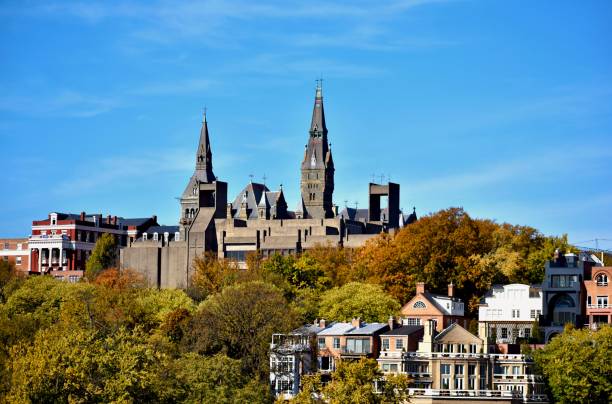
Texas is not known for its progressive approach to renewable energy – the state was built almost entirely on oil. One small town north of Austin is rapidly building that reputation.
Georgetown, Texas, began planning in 2014 to get 100 percent of its energy from renewable sources. These include solar and wind. All the power in Georgetown, Texas, is now sourced from significant wind and solar farms in West Texas.
Georgetown became the first city in the United States to be 100 percent renewable in July 2018 when Buckthorn Solar Plant in Fort Stockton began supplying energy. How it works, and how other cities could follow Georgetown’s lead.
SOLAR POWER SAVES PUBLIC FUNDS FOR MUNICIPAL GOVERNMENT
Georgetown, Texas, is different from other towns, such as Burlington, Vermont (home of Ben & Jerry’s ice cream and crunchy granola), because its decision to switch over to renewable energy is not necessarily motivated by environmental concerns.
Dale Ross, the mayor of Georgetown, is more interested in the economic opportunities. Ross claims that while local gas companies only offered contracts of seven years, solar and wind energy providers could guarantee contracts lasting 20 to 25. has also reduced the price of renewable energy from 11.4 cents a kilowatt-hour in 2008 to just 8.5 cents in 2017.
CITY GOVERNMENTS NEED TO LOOK AT RENEWABLE ENERGY MORE OFTEN
According to the mayor, Texas will lead the energy market if it embraces solar and wind, no matter where the energy comes from. Solar and wind power in Texas could make it a future powerhouse for renewable energy. Experts predict around 50% of all electricity will be generated by renewables by 2050. So setting up for this market shift is a no-brainer.
Factors affecting municipal government investment in Solar
It’s a difficult question to answer because each town’s demographics, renewable energy potential, and utility arrangements differ. Kodiak Island in Alaska, a city that is 100 percent renewable, gets its energy from hydropower and wind. On the other hand, Burlington, Vermont, uses different resources, including biomass, wind and solar power, hydropower, and landfill gases. The key to success in renewable energy is getting the right mix.
POWER SWEAR BETWEEN UTILITY COMPANIES AND MUNICIPAL GOVERNMENTS
Utility companies are another issue. The towns that own their municipal utility companies and do not rely on the larger commercial state providers have greater control over their energy sources. If cities have their electrical grid, they may avoid more difficult negotiations if they want to go 100 percent renewable.
ENERGY ISSUES ARE SOCIOECONOMIC ISSUES FOR MUNICIPAL GOVERNMENTS
This helps frame energy as an issue of socioeconomic importance. It is not a misrepresentation. Many cities have experienced a drop in energy costs after achieving 100 percent renewable energy goals and other energy efficiency goals.
Greensburg, Kansas, another city that is 100 percent renewable, has cut its energy expenditure by $200,000 after retrofitting the most significant buildings. It’s not only about energy costs. The goal of many municipal areas to become 100 percent renewable was to create jobs, boost the local economy, and ensure their energy future.
PROGRESS IN GETTING SOLAR PANELS BUY-IN LOCALLY
It is commendable to sign a pledge to switch to 100 percent renewable power. As of 2018, more than 100 cities had made this commitment via the Sierra Club “Ready for 100 initiative.
Achieving 100 percent renewable energy indeed presents both logistical and political difficulties. Only some regions are prepared for such an ambitious goal. According to a Columbia University’s Earth Institute study, small energy projects can often give the needed momentum for a 100 percent commitment. The institute emphasizes the following actions in particular:
Municipalities can make energy-efficient improvements, such as installing solar panels or LEED-certified public buildings.
Setting goals and establishing accountability are essential. Cities should create a climate plan and also have a way to measure success and report progress.
Funding for energy projects such as PACE, community solar, power purchase agreements, and other options.
Negotiating with utilities for the revision of energy policies and processes
Both commercial and individual constituents must do their part by expressing an interest in alternative energy sources. You can do this by contacting local governments or investing in solar panels on your property.
Freedom Solar can assist you with this final point. We would love to assist your city, business, or home achieve your renewable energy goals by installing innovative solar systems. Contact us to discover how solar energy can help you reduce your electricity costs and even change how energy is used in other areas.
